
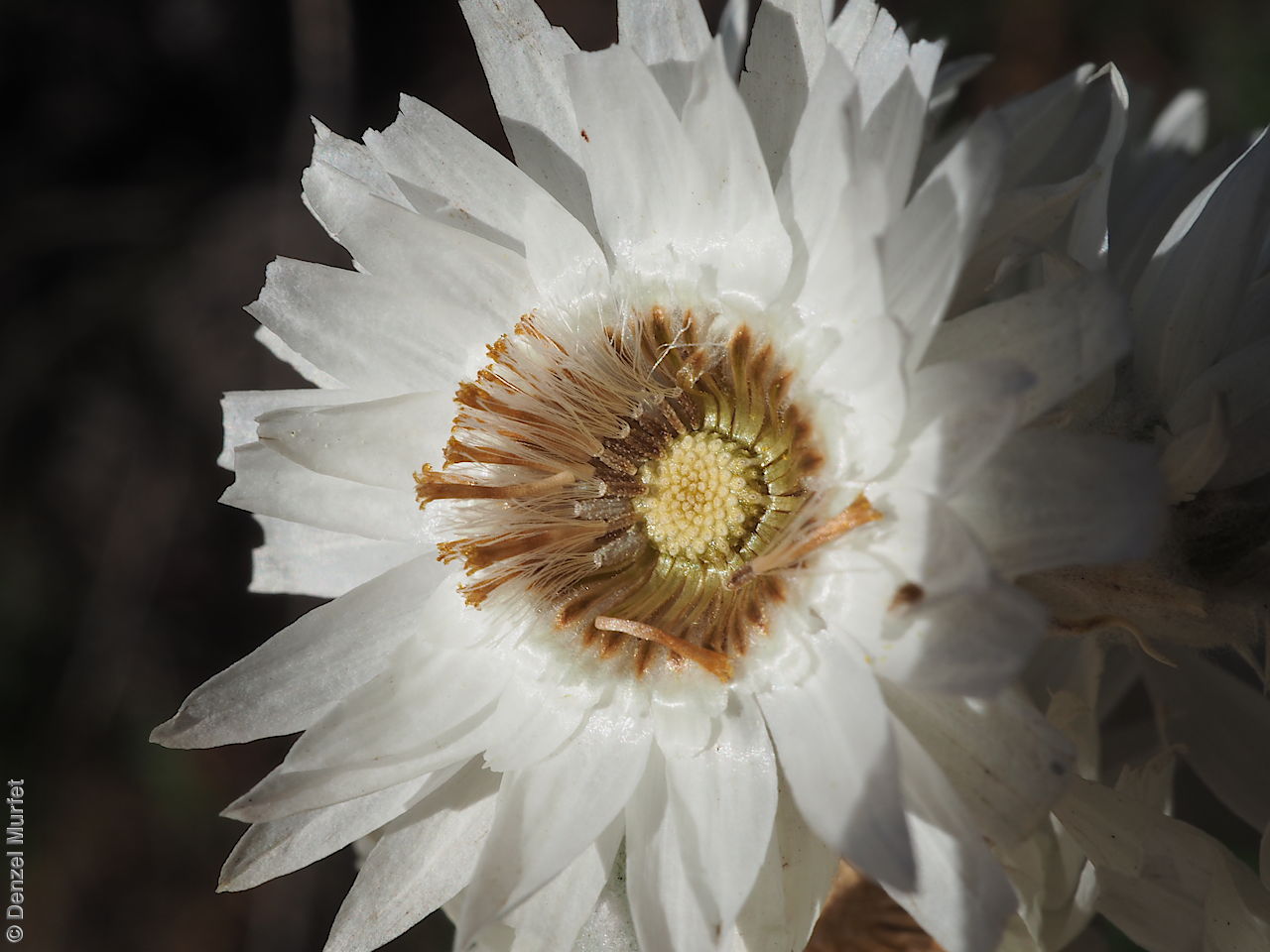
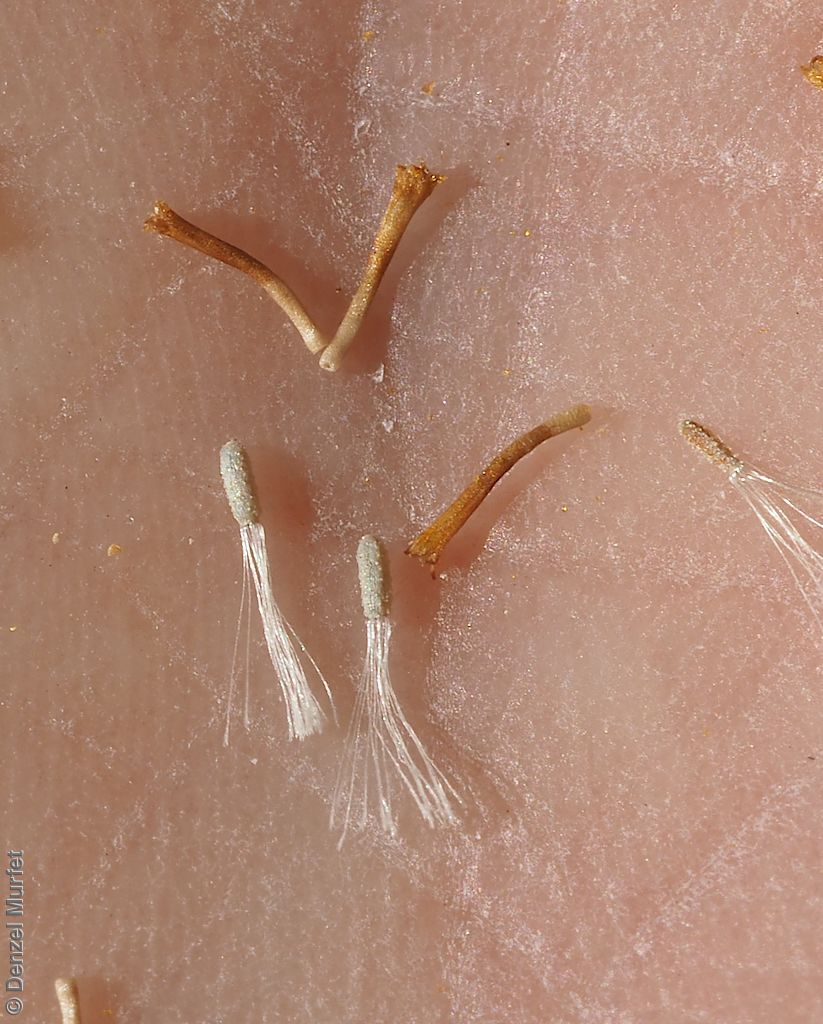
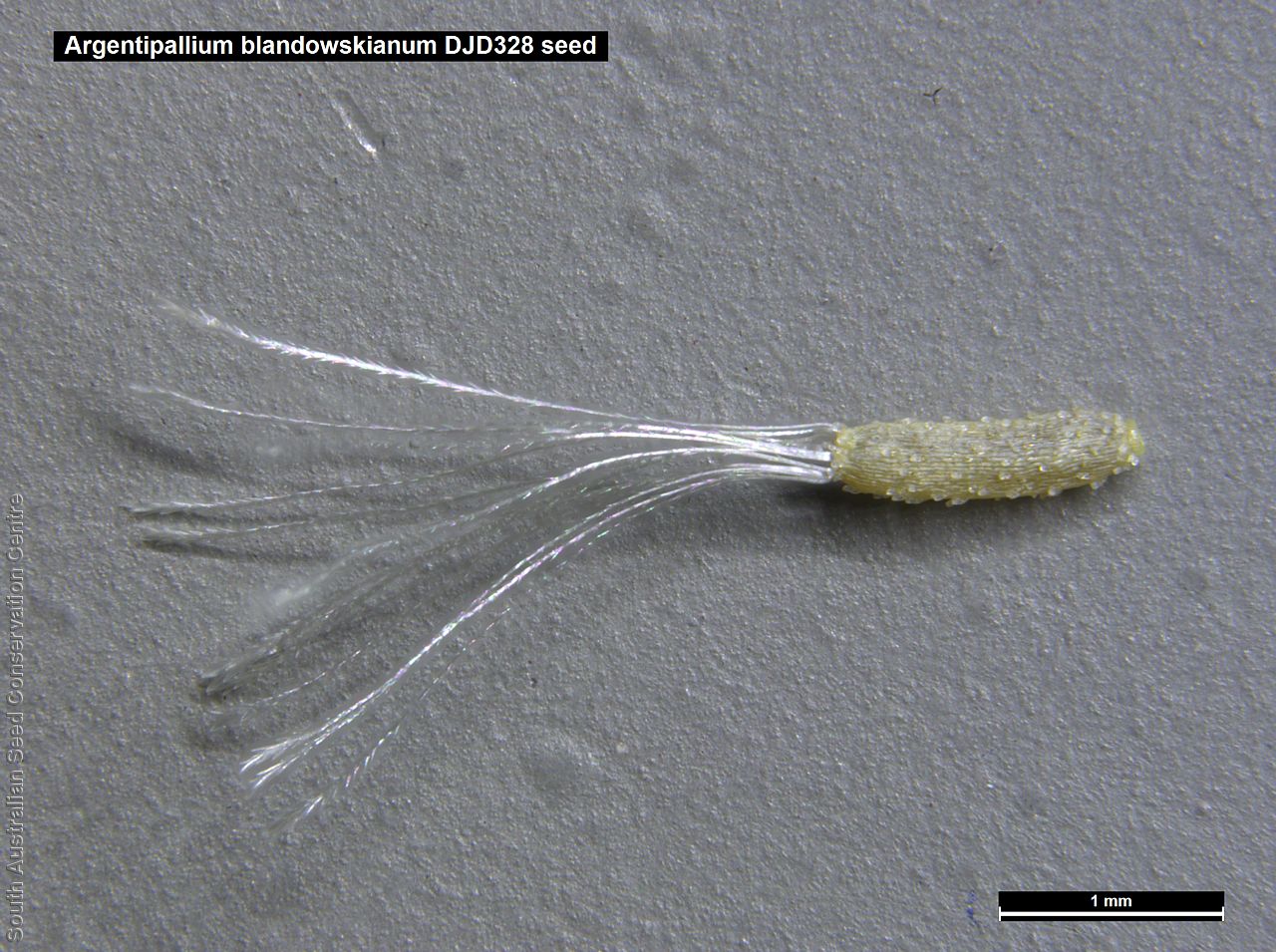
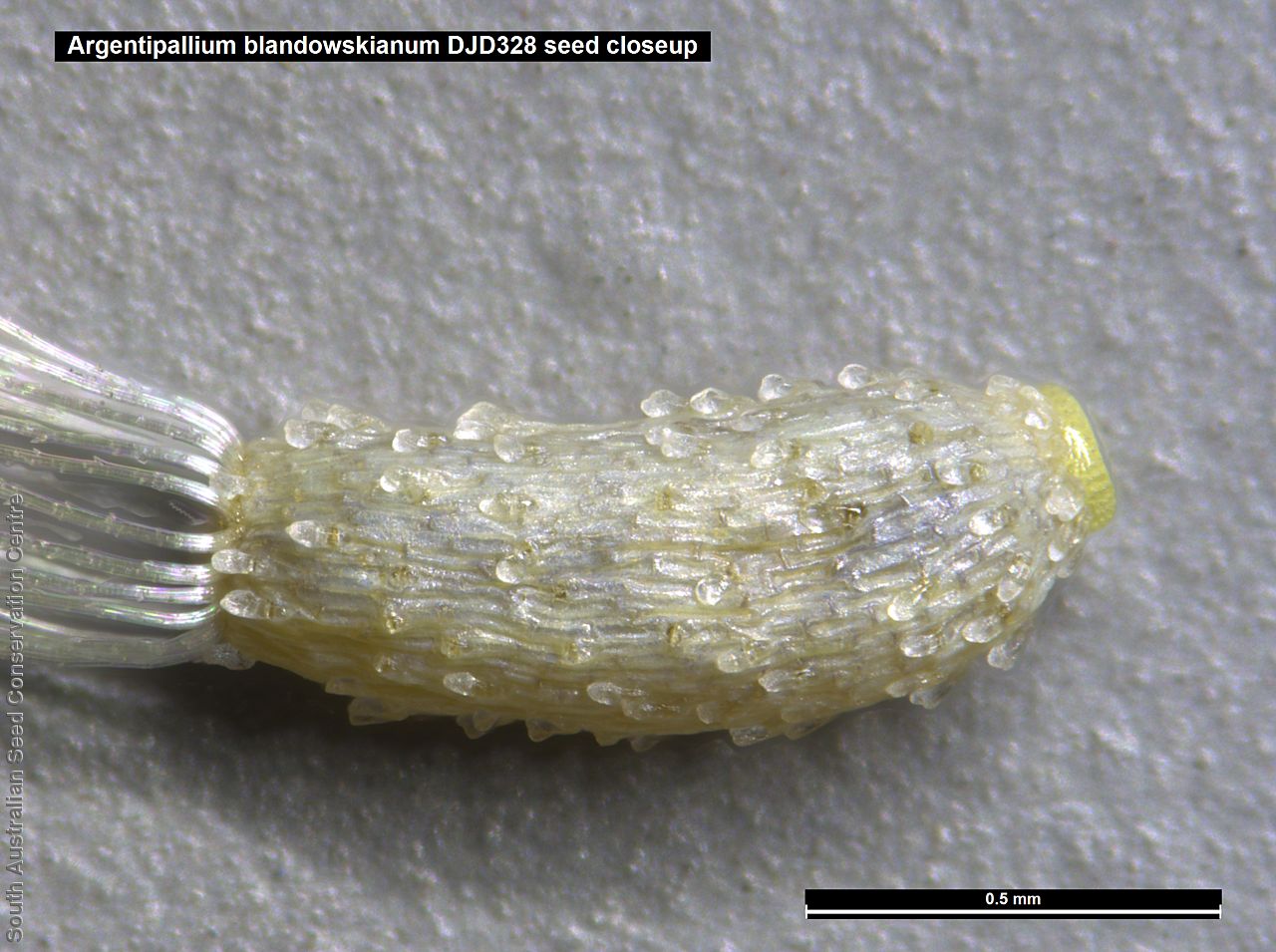
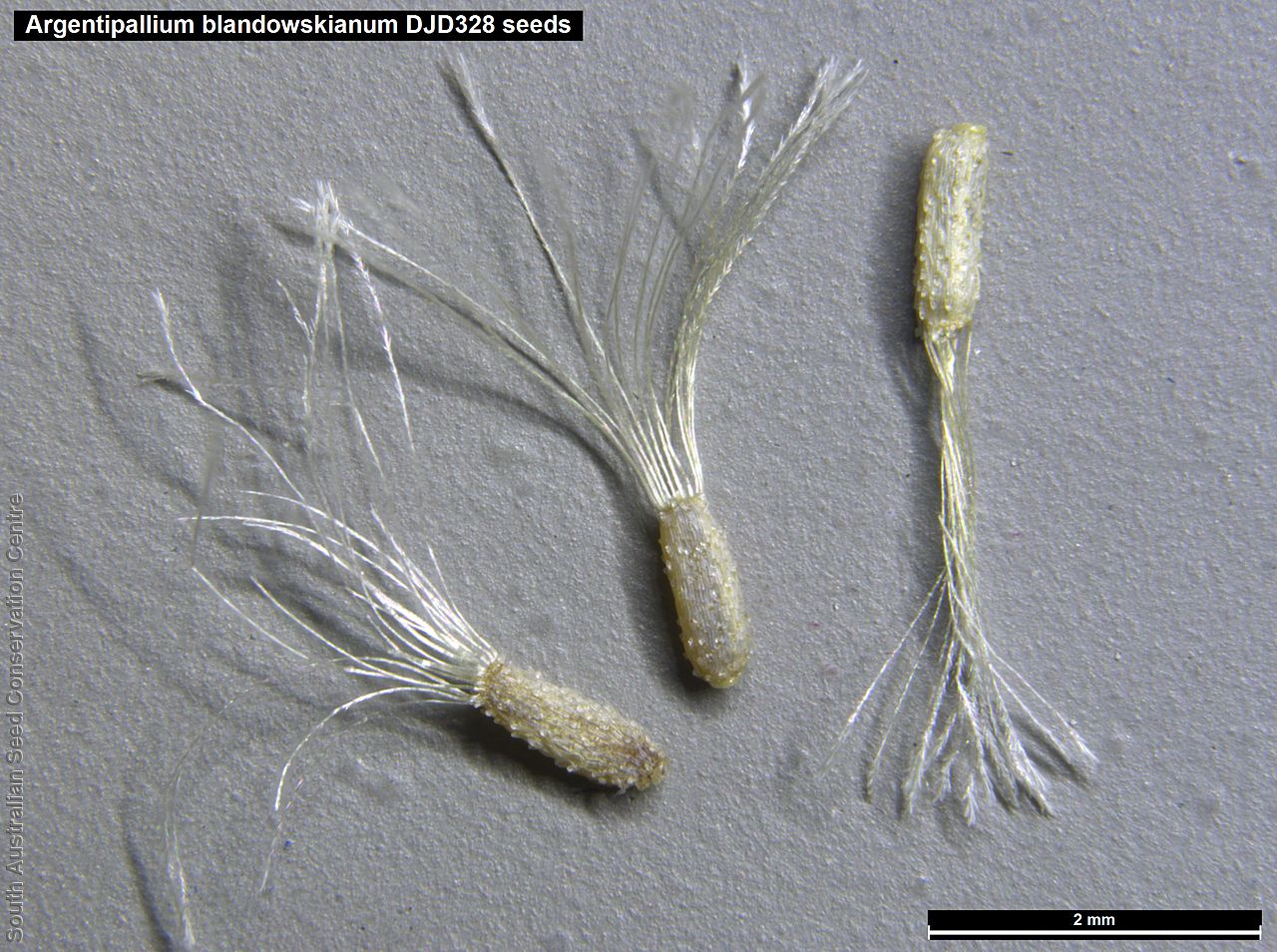


Botanical art
Prior names
Helichrysum blandowskianum
Etymology
Argentipallium from the Latin 'argenteus' meaning silver and 'pallium' meaning mantle, a reference to the silvery indumentum that covers leaves and branches of some species. Blandowskianum named after Johann Wilhelm Theodor Ludwig von Blandowski (1822-1878), known in English as William Blandowski, a German zoologist and mining engineer who explored tracts of Central Victoria. He helped found the Geological Society of Victoria in 1852 and was appointed Government Zoologist in April 1854.
Distribution and status
Found in the southern part of South Australia, in the Southern Mount Lofty Ranges, Murray and South-east regions, growing in heathland on deep, usually siliceous sands. Also found in Victoria. Native. Common in South Australia. Common in Victoria.
Herbarium regions: Murray, Southern Lofty, South Eastern, Green Adelaide
NRM regions: Adelaide and Mount Lofty Ranges, South Australian Murray-Darling Basin, South East
AVH map: SA distribution map (external link)
Plant description
Erect perennial herb to 50 cm tall with several stems, usually branched, with dense woolly hairs. Leaves oblanceolate, narrow, flat, covered with soft thick woolly fairs. Flowers white or pinkish daisies. Flowering between September and December. Fruits are white, papery daisy. Seeds are yellow or pale brown seed to 1 mm long and 0.5 mm wide, covered in tiny tubercules with a long pappus at one end. Seed embryo type is spathulate fully developed.
Seed collection and propagation
Collect seeds between November and January. Collect daisy heads that are drying off, easily removed by hand. Place the heads in a tray for a week to dry. Then rub the heads gently with your hands to dislodge the seeds. Viable seeds will be round and hard. Store the seeds with a desiccant such as dried silica beads or dry rice, in an air tight container in a cool and dry place. From one collection, the seed viability was average, at 60%. Seeds are non-dormant, viable seed should germinate readily.
| Location | No. of seeds (weight grams) | Number of plants | Date collected | Collection number Collection location | Date stored | % Viability | Storage temperature |
|---|---|---|---|---|---|---|---|
| BGA MSB | 8,850 (1.89 g) 8,850 (1.89 g) | 19-Jan-2006 | DJD328 Southern Lofty | 14-Sep-2006 | 60% | -18°C |
Number of plants: This is the number of plants from which the seeds were collected.
Collection location: The Herbarium of South Australia's region name.
% Viability: Percentage of filled healthy seeds determined by a cut test or x-ray.